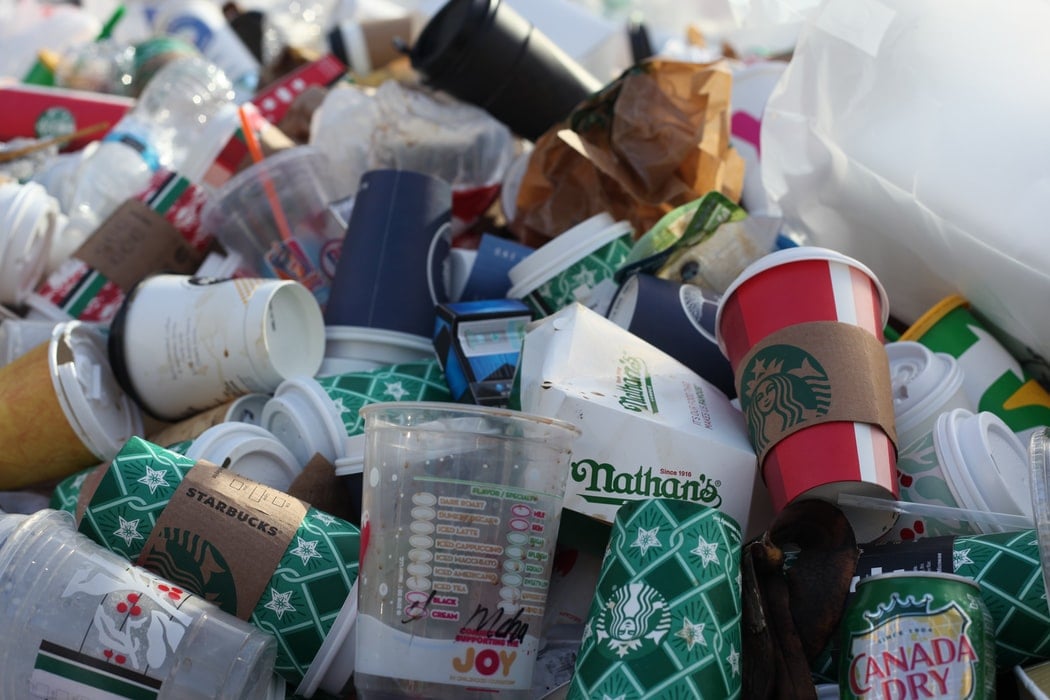One-third of all food produced for human consumption globally is wasted and this is problematic for a number of reasons. First, waste almost always ends up rotting in a landfill, where it produces greenhouse gases. Food waste is responsible for 8% of global greenhouse gas emissions, contributing to the ever-worsening state of climate breakdown. Second, this wasted food could otherwise help sustain those living in food poverty. In fact, less than one-quarter of the food wasted in the UK, United States of America and Europe alone, would be enough to feed the world’s 1 billion most hungry. And third, food waste costs money. Annually, global food waste amounts to 1.3 billion tonnes of waste, which amounts to $1 trillion.
One way to help eliminate food waste is the use of food waste apps like Too Good to Go. This app allows food retailers to offer-up any surplus food in ‘magic bags’ at discounted prices. Hungry punters purchase said bags and receive an allocated timeslot in which to collect their food. Since its set-up in 2015, the app has saved 35,921,167 meals from waste globally – which has prevented 89,803 tonnes of carbon dioxide (CO2) from being released into the atmosphere. To put this in perspective, this is the same amount of CO2 saved by taking 19.5 cars off the road for one year. So, while this does help, it is not eliminating a lot of waste. Or something like that?
Too good to go is also actually only available in 11 countries. In the UK it is only available in 120 towns and cities. As there are 195 countries in the world and tens of thousands of towns and cities in the UK, this highlights a limit on the widespread influence of the app. Its effectiveness in reducing food waste is further diminished by other factors. You need a smartphone, and one which you can check regularly in order not to miss any available ‘magic bags’. You then need to be able to pick-up your bag during the allocated timeslot. Also, adding any dietary requirements or allergy filters limits your choices further. There is also the risk that you might get food you don’t like, as what’s in the bag is always a surprise.
This perhaps explains why the app is not really that popular. Only 2.8 million, out of 67 million, UK residents use the app. Generalising cynically, these users probably have enough money to buy take-away food anyway, do so regularly and are getting a hot bargain. No-one really seems that fussed about the environmental impact of the packaging involved or any food already in their fridge at home. In fact, the £4 saving on an already over-priced Paul’s cheese and ham croissant might be enticing people to buy food they don’t need.
So, while I can’t dispute the fact that Too Good to Go does help combat food waste, it is nowhere near popular, widespread or efficient enough to make a true difference.
However, there are other food-waste apps out there. City Harvest and Food Cloud distribute surplus food to the homeless and food-bank charities. Approved Food and Clearance XL let you buy cheap foods online that are past their ‘best before’ date, but not their ‘use by’ date. There is also Olio, which connects you with people in your local area who want to give away their excess food for free! This may be great if you live in London, where there are 50 items within a 5km radius. However, as an adult vegan in the Scottish borders, the only item within walking distance that I could collect was a single pouch of Ella’s Kitchen ‘Spag Bol’ baby food.
The main issue with these apps is that they address only the tip of the food waste iceberg, as consumers actually only represent 20% of total global food waste. Europe and the Americas are responsible for three-quarters of this consumer waste, so it is important that food waste apps are predominantly used in these countries. However, 64% of all food waste actually occurs during harvest or in subsequent storage, with 50% of this waste occurring in Asia. In Asia and Africa, very little waste occurs at the household, consumer level. These figures highlight a key fact: the main responsibility for dealing with food waste lies with the food and agricultural industries. This means, especially in developing countries, we need more efficient harvesting and better subsequent storage. However, there is still an imperative to address food waste at the consumer and household levels in developed countries.
Food waste apps are good, but only to a small degree. The popularity and widespread influence of food waste apps like Too Good to Go is constrained by many socio-geographical factors, meaning that the power of such apps to reduce food waste and its negative effect on our environment is minimal. These apps also do nothing to combat global food poverty. In the wider scheme of things, consumer waste is only a minor offender and efforts should really be focused on addressing waste at the industrial level of production.
But it must be said that the apps do genuinely incentivise people to make more conscientious decisions to avoid food waste. This is making a positive contribution, albeit a small one, and is a step in the right direction. However, here’s some solid advice for the individual: make packed lunches, share food, get creative and compost properly. Also, any warm glow you may need from saving food from the bin can be had at the reduced section at the Magdalen Street Tesco’s, 3 p.m. Sunday.



